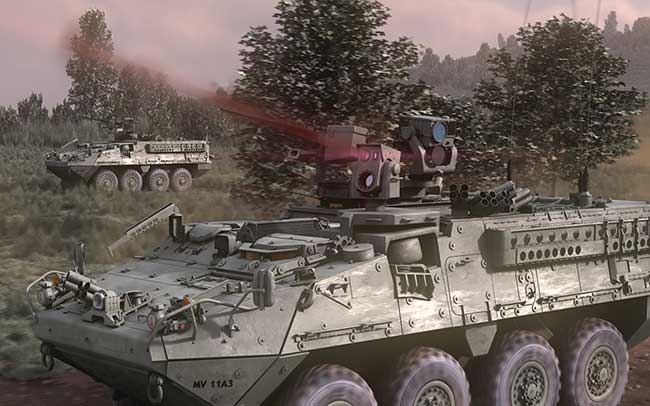Speed-of-light engagements with limited collateral damage make laser weapon systems a highly precise and scalable option in modern warfare.
 The danger facing today’s global defense force is shifting. With the rise in unmanned aerial vehicles (UAVs) and enemies gaining greater ballistic missile expertise, ultraprecise and quick-response laser systems are attracting more interest than ever before.
The danger facing today’s global defense force is shifting. With the rise in unmanned aerial vehicles (UAVs) and enemies gaining greater ballistic missile expertise, ultraprecise and quick-response laser systems are attracting more interest than ever before.
Lasers offer a low-cost-per-shot solution to high-volume threats posed by drones and also offer the deep magazine capability to address multiple targets with reduced logistics tails. For many years, lasers have been used in a variety of defense applications, from determining target ranges, to precisely delivering munitions, to confusing or jamming optical trackers, and as weapons to dazzle personnel or destroy targets. MIR lasers are even used to counter IR-guided missiles.
“Laser weapon systems provide a viable, affordable solution to the challenges warfighters face today,” said Queena Jones of Space and Missile Systems at Boeing Defense, Space & Security. “Useful in ground, maritime and airborne applications, the scalable effects of laser systems address a wide range of threats, from defeating optical sensors to disabling airborne mortars.”
Neutralizing enemy drones
Before firing the first shot, the threat must be accurately located and followed. When it comes to range-finding and tracking, lasers offer the flexibility and adaptability to support a wide range of missions.
For example, Boeing’s acquisition, tracking and pointing (ATP) capability is key to enabling the rest of the laser weapon system to perform properly. In 2010, Boeing first showcased ATP capability on programs that included the air-to-ground Advanced Tactical Laser (ATL), which was demonstrated on a C-130 aircraft against moving ground targets.
The next step was to tackle targets in the air. In 2013, Boeing delivered the High Energy Laser Mobile Demonstrator (HEL MD) to the U.S. Army to disable airborne mortars. Today, Boeing’s Compact Laser Weapon System (CLWS) is being integrated on ground-based Stryker combat vehicles to provide defense against low, slow UAVs.
Member Exclusive: To read the complete article, please Login or Register